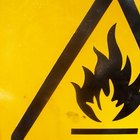
Flame retardant or fire resistant fabric is a common feature in clothing designed for the industrial sector. Firefighters may be the most frequent wearers of flame retardant clothing; however, other professions including electricians and oil/gas drillers make use of it too. The idea of protecting textiles against fire has been around since roughly 400 B.C. even though the notion of creating fireproof textiles didn’t gain prominence until the 17th century.
Beginnings of Flame Retardant Textiles
The earliest attempts at making fabric fire resistant were in 1632 when it was suggested that fireproofing the textiles would reduce fire risks in theaters. The first materials used in this process were clay and plaster of Paris. The 18th century saw the inclusion of alum and ammonium phosphate in the attempts at making fabrics fire retardant.
Gay-Lussac & Advancements in Flame Retardant Textiles
In 1820, chemist Gay-Lussac conducted the first serious experimentation into making fabrics flame retardant. Gay-Lussac determined that there were two types of salts capable of making fabrics somewhat flame resistant. The first salt was low melting and able to form a glassy layer over fabrics, and the second broke down into a non-flammable vapor when it was heated. By the early 20th century other chemists further perfected Gay-Lussac’s method by incorporating stannic oxide into fabrics to make them flame retardant.
First Flame Retardant Clothing
As the use of synthetic fibers in textiles became dominant, cotton producers were forced to find a new method of promoting their product. The Army’s Quartermaster Corps' search for flame retardant uniforms brought about further research into flame resistant clothing. The advancing technologies of the 20th century allowed scientists to begin the process of chemically modifying the cellulose molecules with flame retardants both on the surface and within the cotton fiber. In order to make this process commercially viable, the scientists had to find a chemical combination that maintained the cotton’s strength and durability without being too expensive.
Flame Retardant Clothing Regulations
The Flammable Fabrics Act of 1953 brought about a change in how clothing was manufactured and sold commercially. As a result of this legislation, clothing could no longer be made out of dangerously flammable textiles. In order for a textile to be made into clothing it needed to pass Consumer Product Safety Commission tests before it could be sold. Special regulations have been created to ensure that children’s sleepwear is made of flame retardant fabrics.
Industrial Flame Retardant Clothing
The National Fire Prevention Association created NFPA 70E Standard for Electrical Safety in the Workplace to address the use of flame retardant clothing in industrial settings. First composed in 2000, this standard has been recognized by the Occupational Safety and Health Administration as a necessary safety precaution for industries that deal with the repair, installation and maintenance of electrical systems. The enactment of this standard has increased the need for flame retardant clothing in industries not involved in the safety sector.
Related Articles

Spandex vs. Polyester

The History of Bamboo Fabric

Nomex Vs. Indura Cotton

What Is a Synthetic Polyester Fabric?

Which Fabrics Are Most Fire Resistant?

How Much of the World's Clothing Is ...

What Is the Durability of Bamboo Fabric?

The Difference in Lycra & Cotton

Advantages and Disadvantages of ...

The History of Steel Toe Boots

What Are Fire Resistant Clothes Made Of?

Alum as an Ingredient in Wrinkle Cream

List of Plants Used for Clothing

Safety Hazards of Acetone

Processed Food Definition

What Is Better for Cookware: Glass, ...
What Kind of Cans Are Used for Canned ...

What Products Contain Red Phosphorus?

The History of Communication Technology

What Effects Do Polyester Factories ...
References
Writer Bio
Joanne Robitaille's first journalistic experience was in 1994, when she did school reports for a local newspaper, "Shoreline." Her articles now appear on various websites. Robitaille has a Bachelor of Arts in English and creative writing from the University of Windsor.
Photo Credits
fireman image by Edward White from Fotolia.com